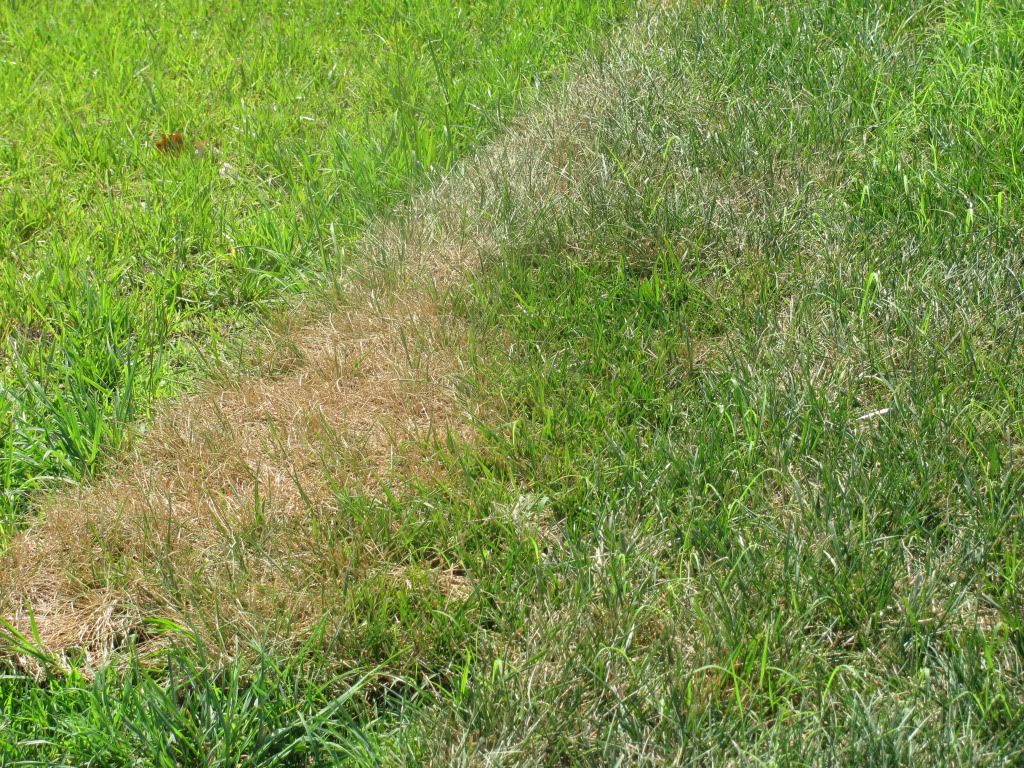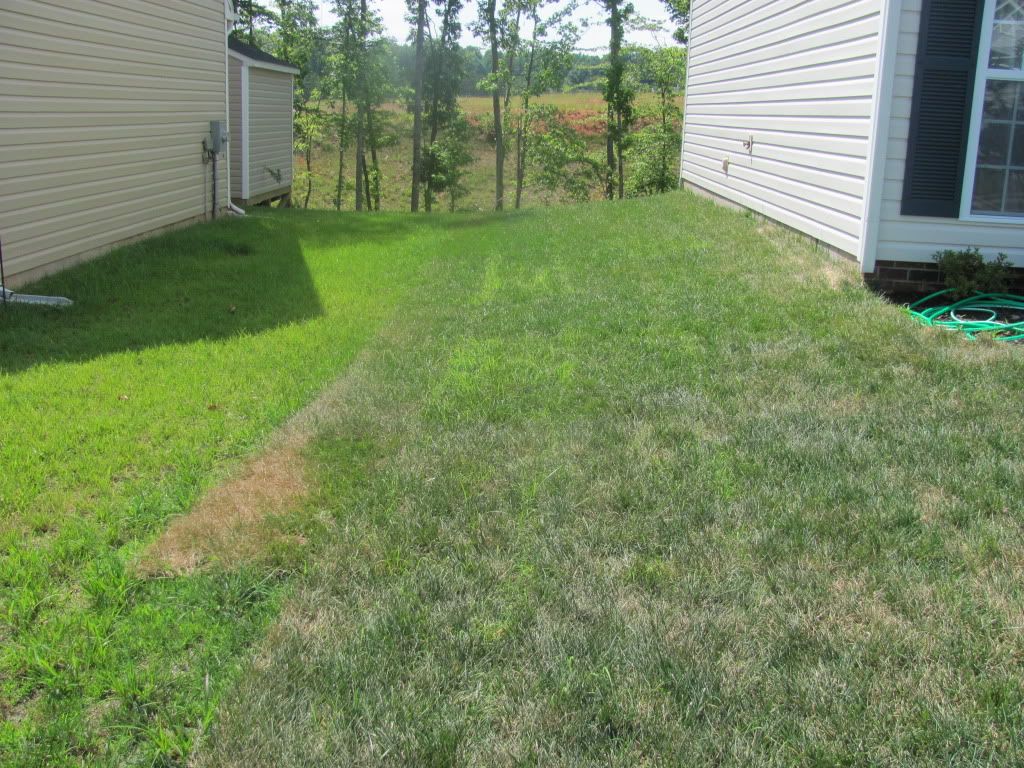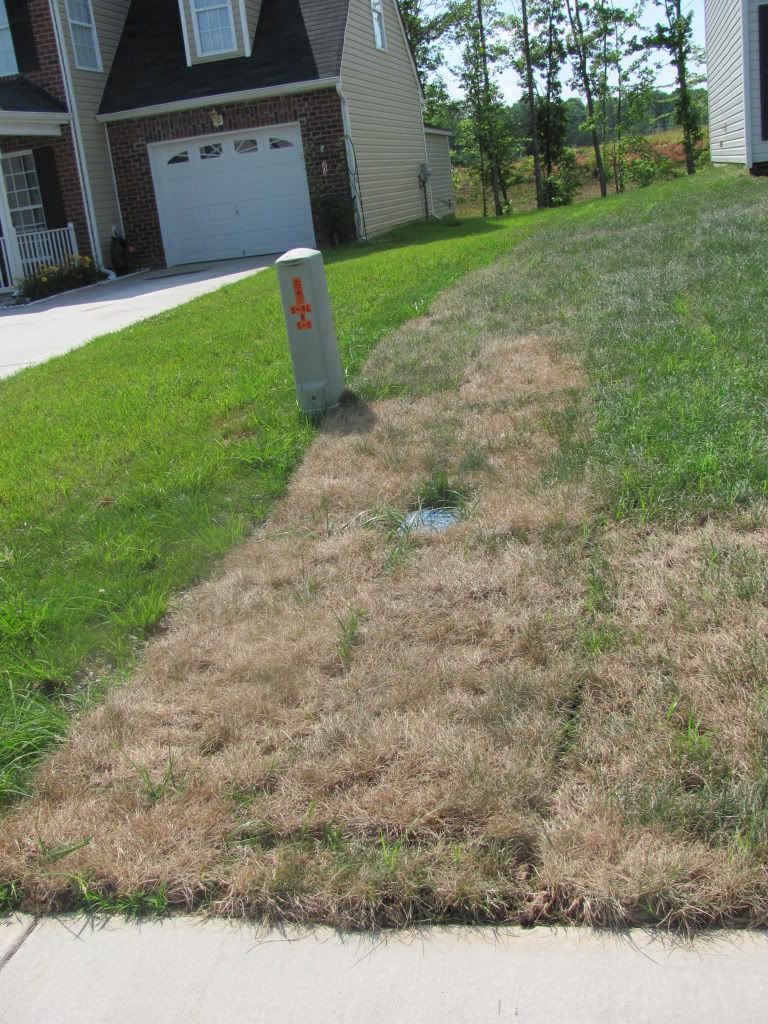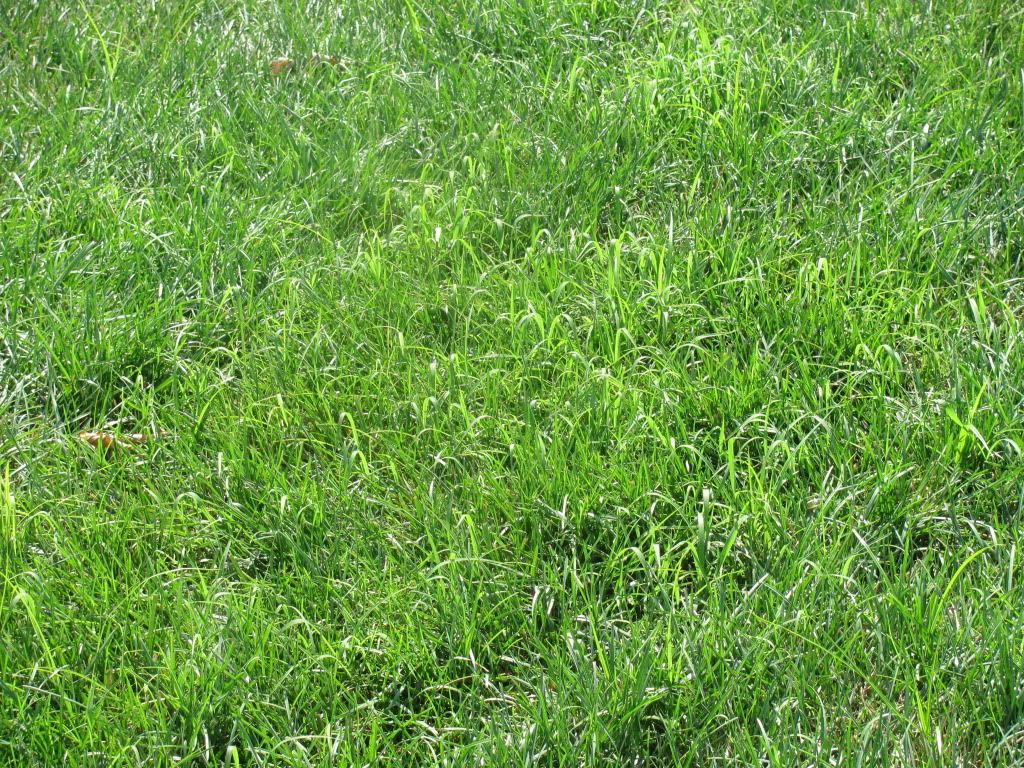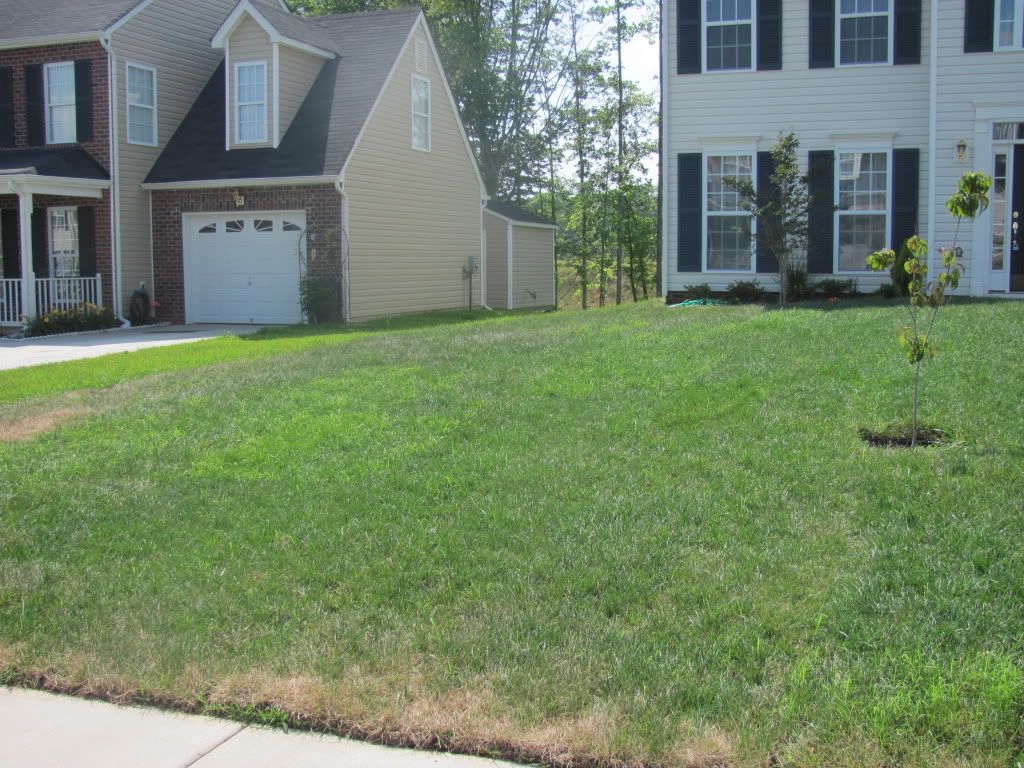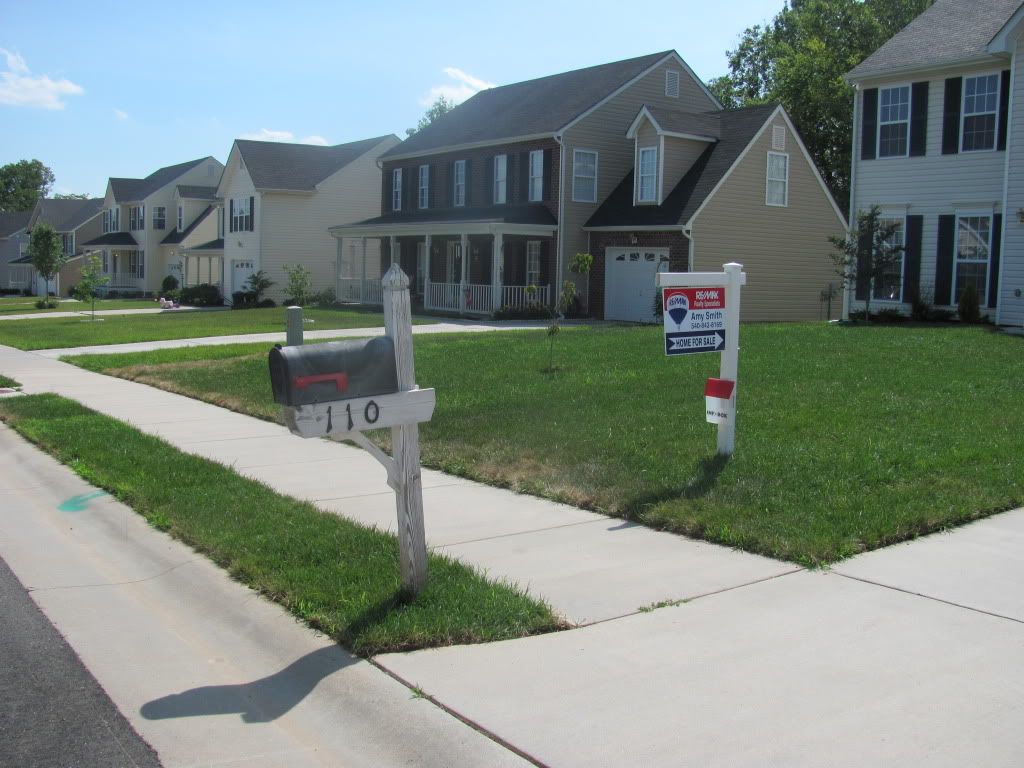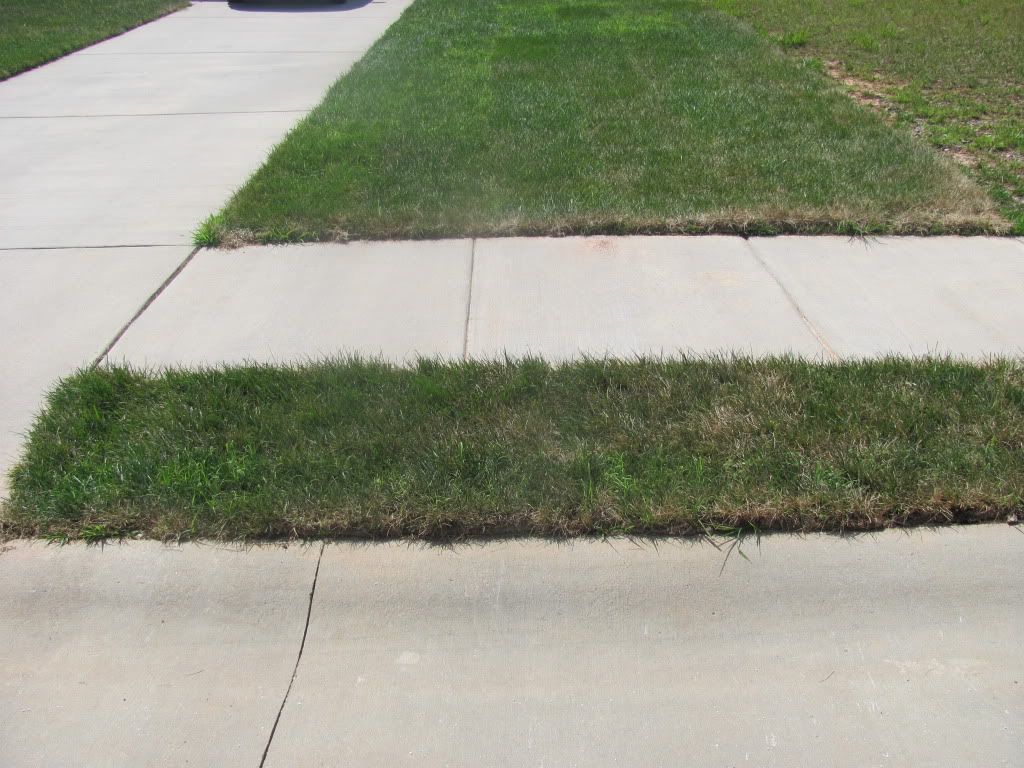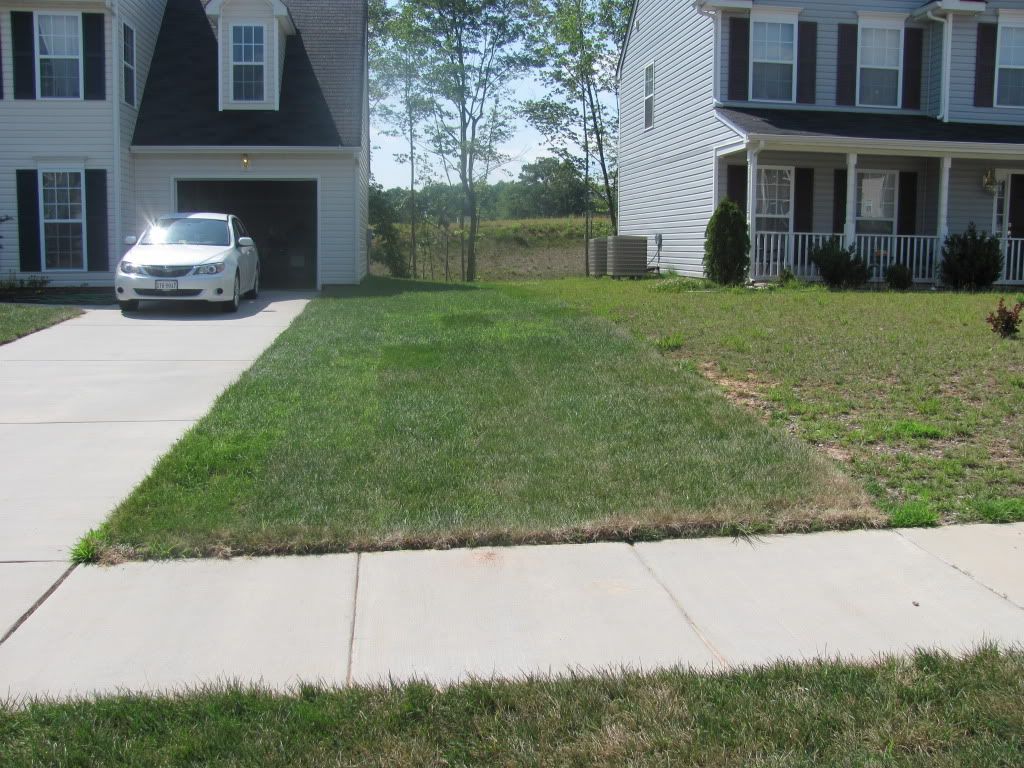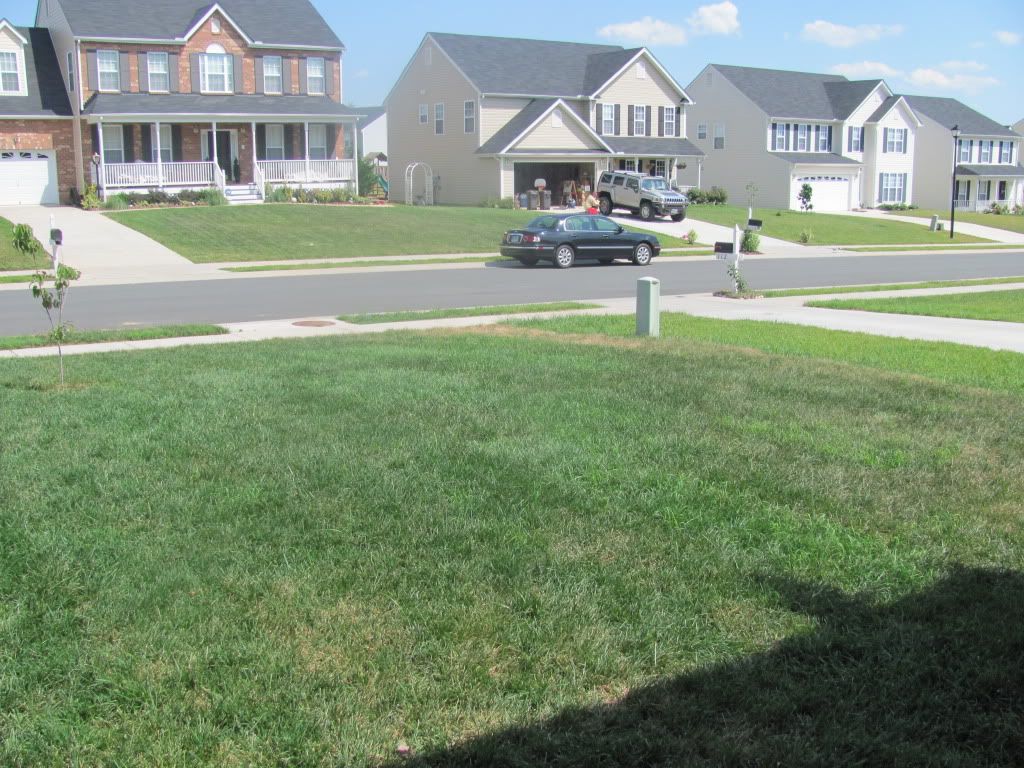Hello everyone, first time user here.
I just had SOD installed 2 weeks ago from today. I had a contractor install the SOD. He came in prior to laying the SOD and tiled (3-4 inches) and composed the areas that would be receiving SOD.
I've never been a grass guy so I can't tell you exactly what type of grass it is. I'm assuming it is a tall fescue grass. The SOD was grown by http://www.woodwardturf.com/.
Anyways, I am starting to worry about the grass in certain areas where it seems to be drying out. The first week the SOD was in I was trying to lay at least an inch a day, or determined by moisture of the soil beneath the SOD. These areas started appearing towards the second week of growth. I tried pulling on the SOD and it seems to be well rooted. It sounds very dry walking on it. These areas have been getting water just as much as the other areas of the yard. I have been trying my best to keep it water and moist. The weather here in VA has been in the 90's the past 2 weeks, with a couple of cooler days.
What is going on and what can I do to repair these areas? Is this grass lacking water, nutrients, diseased?
And secondly, I don't know much about weeds. I'm starting to see some lighter green stuff pop in, is this crab grass? If so, what can be done about it. I know you can't really use any kind of weed control on new SOD for at least a year (or that is what I've read on several websites).
I'm sorry if I haven't laid out enough information, but I can only tell you what I know (or think I know).
Here are pictures of the lawn bellow.
![Image]()
![Image]()
![Image]()
![Image]()
![Image]()
![Image]()
![Image]()
![Image]()
![Image]()
![Image]()
![Image]()
![Image]()
I just had SOD installed 2 weeks ago from today. I had a contractor install the SOD. He came in prior to laying the SOD and tiled (3-4 inches) and composed the areas that would be receiving SOD.
I've never been a grass guy so I can't tell you exactly what type of grass it is. I'm assuming it is a tall fescue grass. The SOD was grown by http://www.woodwardturf.com/.
Anyways, I am starting to worry about the grass in certain areas where it seems to be drying out. The first week the SOD was in I was trying to lay at least an inch a day, or determined by moisture of the soil beneath the SOD. These areas started appearing towards the second week of growth. I tried pulling on the SOD and it seems to be well rooted. It sounds very dry walking on it. These areas have been getting water just as much as the other areas of the yard. I have been trying my best to keep it water and moist. The weather here in VA has been in the 90's the past 2 weeks, with a couple of cooler days.
What is going on and what can I do to repair these areas? Is this grass lacking water, nutrients, diseased?
And secondly, I don't know much about weeds. I'm starting to see some lighter green stuff pop in, is this crab grass? If so, what can be done about it. I know you can't really use any kind of weed control on new SOD for at least a year (or that is what I've read on several websites).
I'm sorry if I haven't laid out enough information, but I can only tell you what I know (or think I know).
Here are pictures of the lawn bellow.
